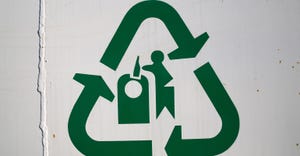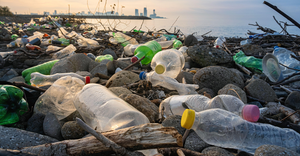Slightly more garbage in 2013 and slightly less recycling. That pretty much sums up the EPA’s recently released trash census. However, 2013 also marked the first time in over 13 years that garbage grew at a higher rate than the population. That means that each one of us generated a little more garbage than we did last year, now 4.4 pounds per day. At the same time, the economy grew at a faster rate than garbage. Even though we had more money to spend, we didn’t throw it away.
The EPA’s data highlights the extraordinary changes that have occurred with our raw materials since 2000. Plastic continued to expand its waste market share and textiles were the big winner with almost a 60 percent increase. All the other materials in the waste stream also grew with two significant exceptions. Paper and glass continued to decline in use, with paper generation down by 19 million tons. Virtually all of the paper loss is in the many different kinds of printed paper from newspapers to office paper. Those are permanent losses driven by the shift to the digital age.
The rise of plastics and the decline in paper also signal another major trend. At 30 percent, packaging remains the largest overall category in the waste stream. Even though packaging often takes the blame for our ‘wasteful’ society, it has declined in tonnage and percentage in the last thirteen years. “Durable” goods, which run the gamut from furniture and appliances to luggage and sporting goods, have increased dramatically while “nondurable” goods such as printed paper and clothing, have gone the other direction. More than anything else in the EPA’s data, durable goods constitute the stuff of our lives, and they are growing. They also have the lowest recycling rate of EPA’s waste categories.
How we manage waste has been evolving along with our raw materials. Disposal is down a bit since 2000. Waste to energy facilities, whether they are mass burn or refuse-derived fuel, started to take off in the late 70’s, but have been flat since 2000. Surprisingly, landfills handled the same amount of waste in 2013 as they did in 1980.
The results on recycling are mixed. In 2013, we recovered 87 million tons of recyclables and organics. While a modest increase from 2012, it sets a national record. However, it wasn’t enough to offset the increase in waste generation. As a result, the recycling/composting rate dropped by 0.2 percent for the second year in a row.
While we may mourn the decline of paper for many reasons, recycling managers are distraught. Paper is the lifeblood of their programs. It still supplies almost half of the materials we recover, but it used to supply more. If we had the same amount of paper today as we did in 2000, both the recycling rate and tonnage would be higher.
And this raises the question what will it take to increase recycling again? We already do well on packaging and very well on printed paper. While we can increase both, organics are the key to significant increase in recycling. Yard and food waste along with non-recyclable but compostable paper products, such as paper towels and plates, and wood packaging, are easily the largest category in the waste stream. We currently recover less than one third of our organics. It’s time to go hunting where the ducks are.
And while we are doing that, let’s remember that Rome wasn’t recycled in a day. We have done very well on the easy recyclables. Building an infrastructure to increase organics recovery will take time, hard work, and a great deal of patience.
Chaz Miller is director of policy/advocacy for the National Waste & Recycling Association, Washington, D.C.
About the Author(s)
You May Also Like




